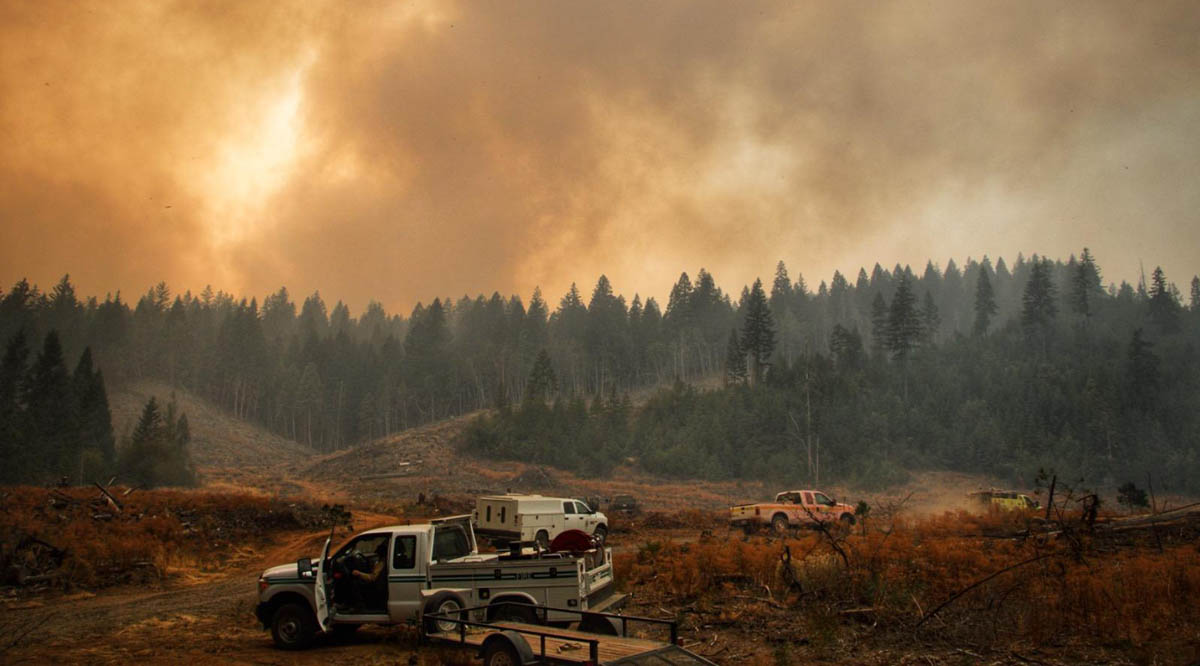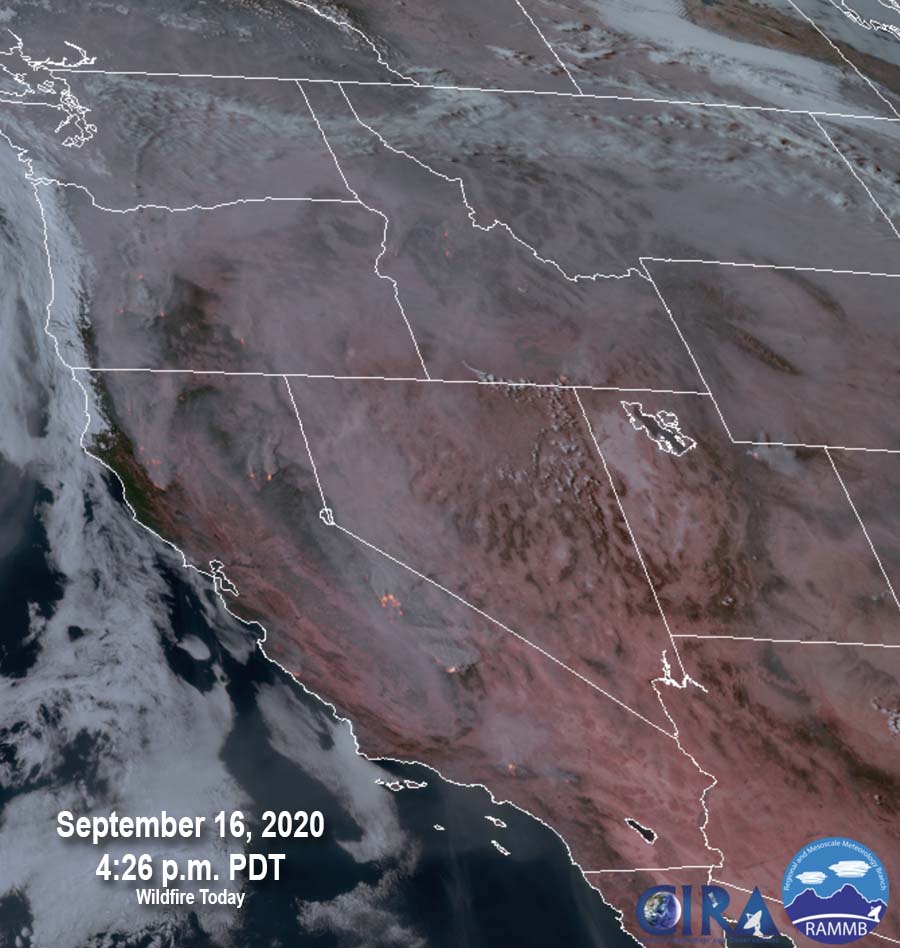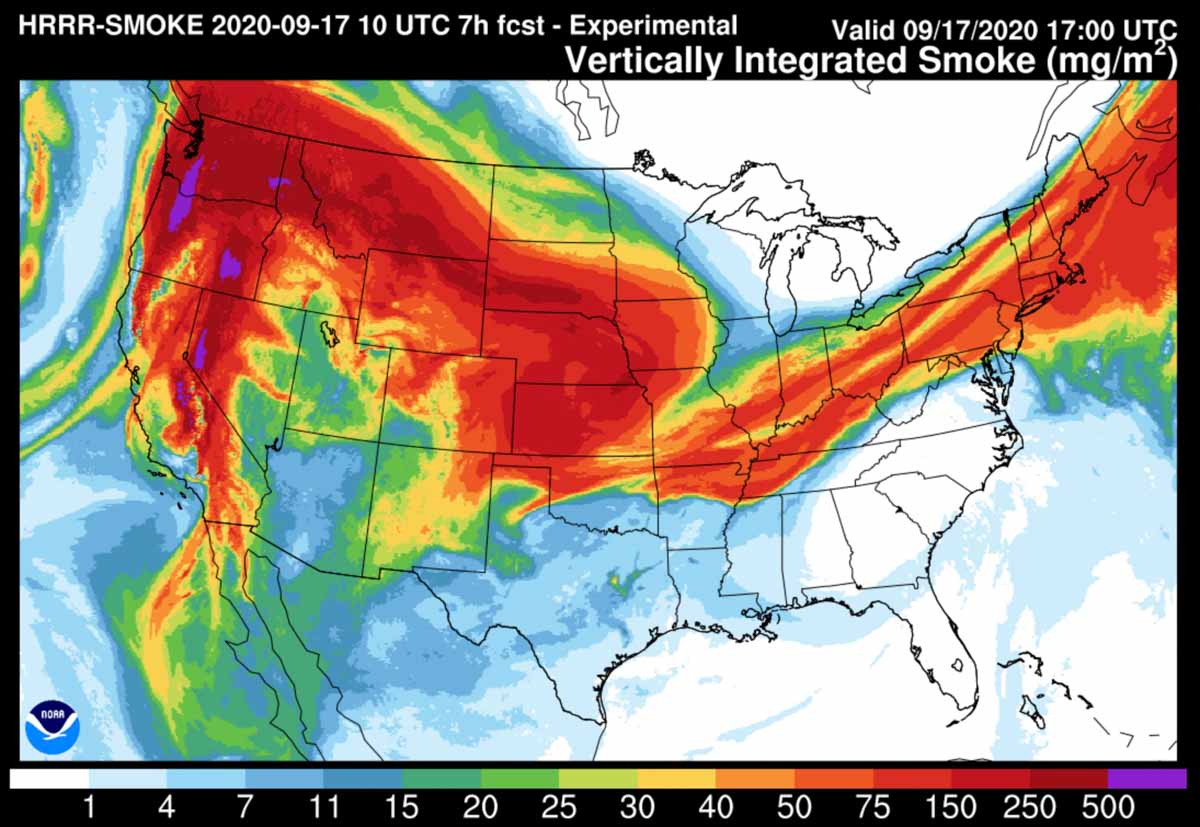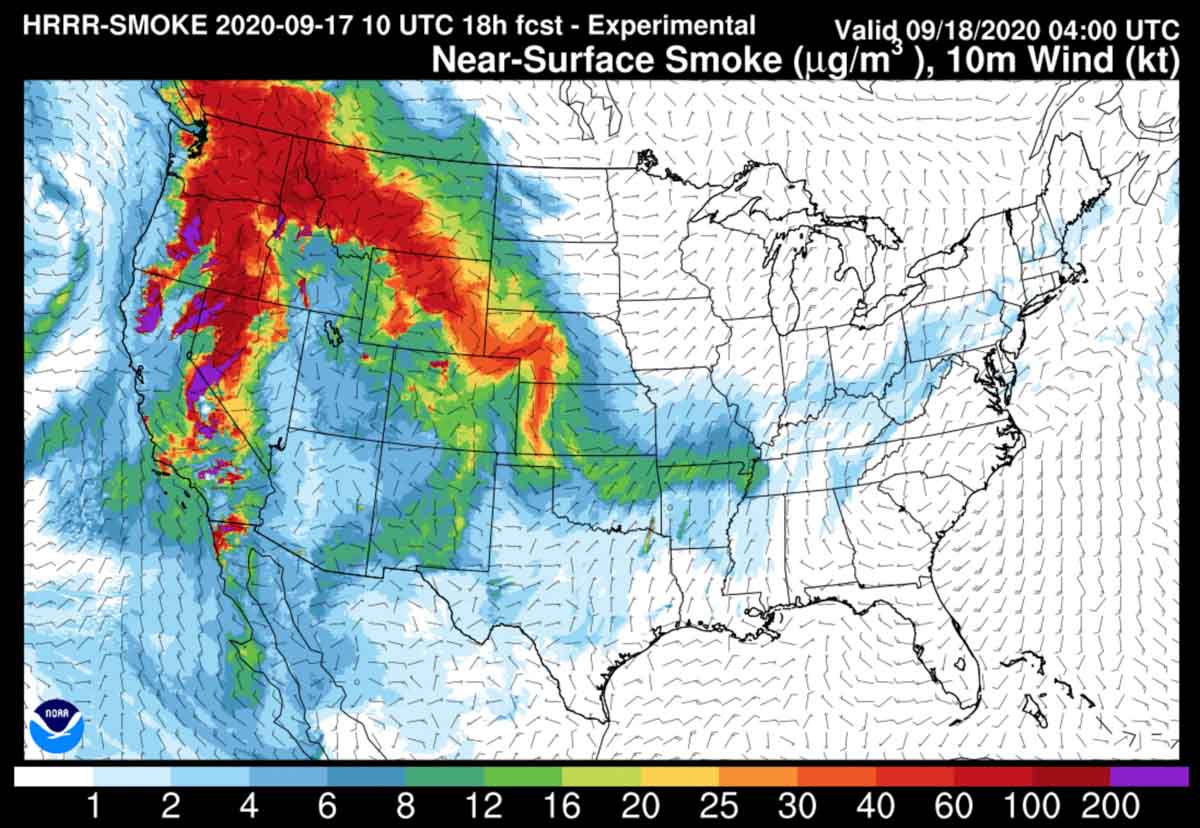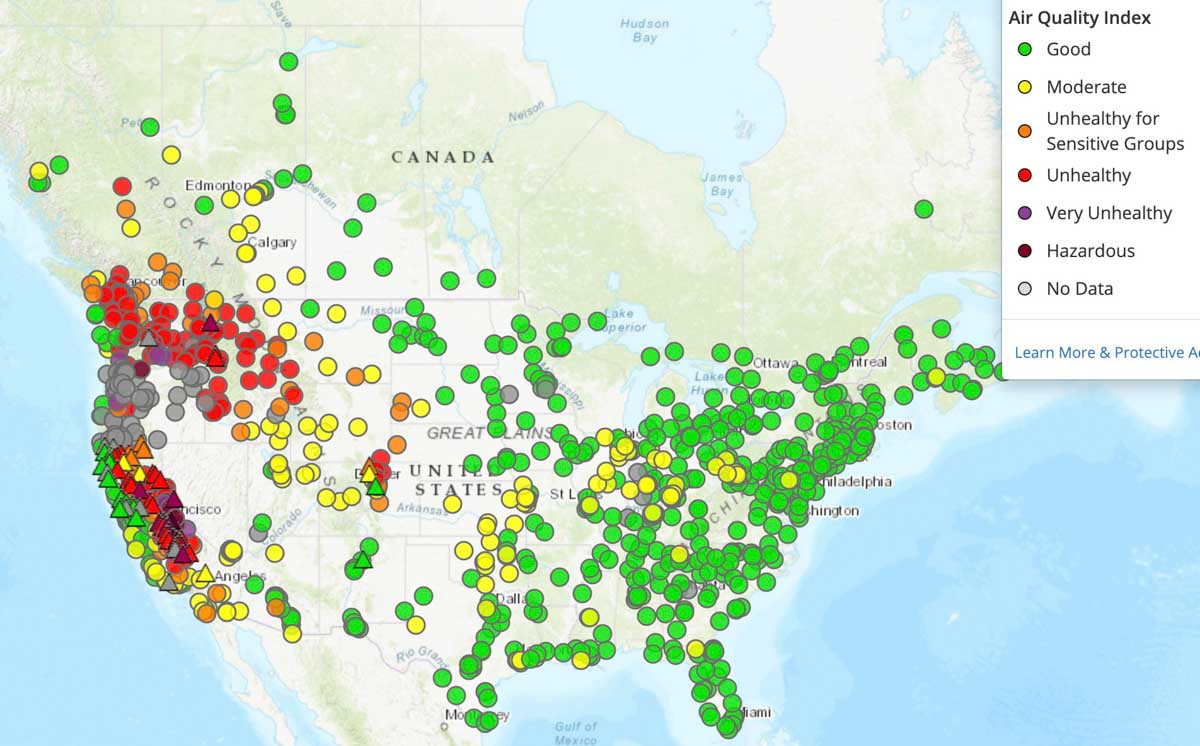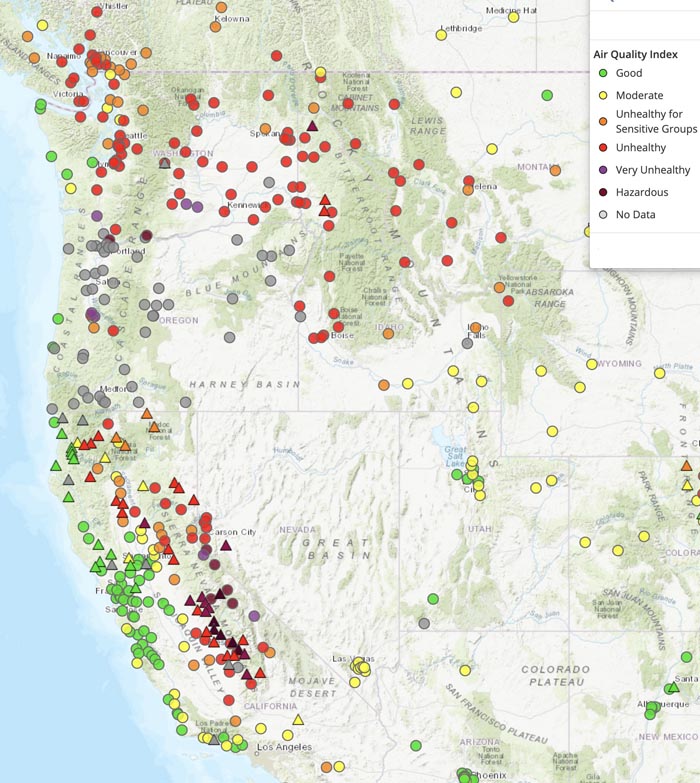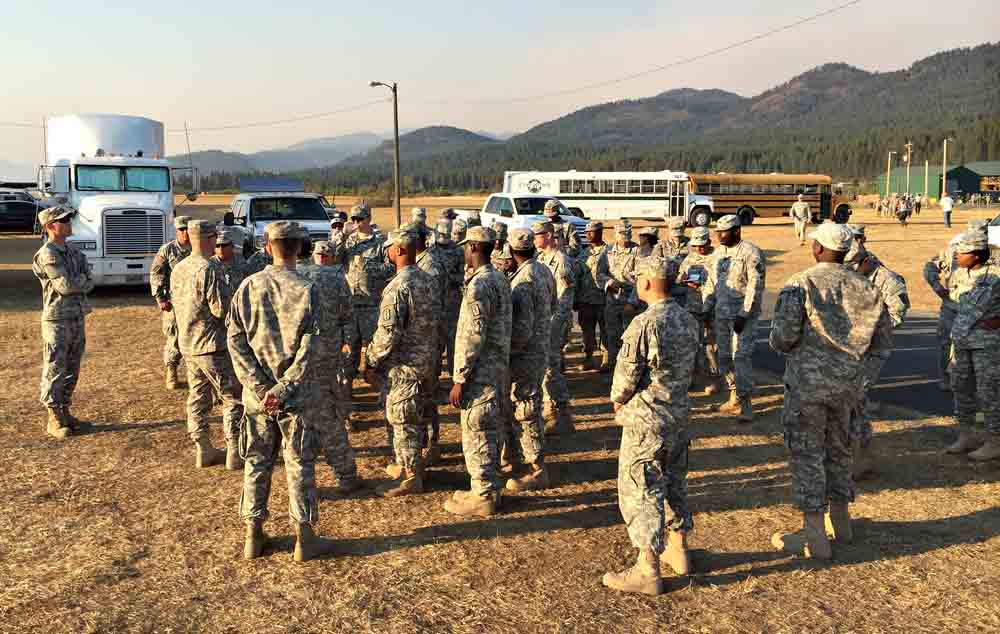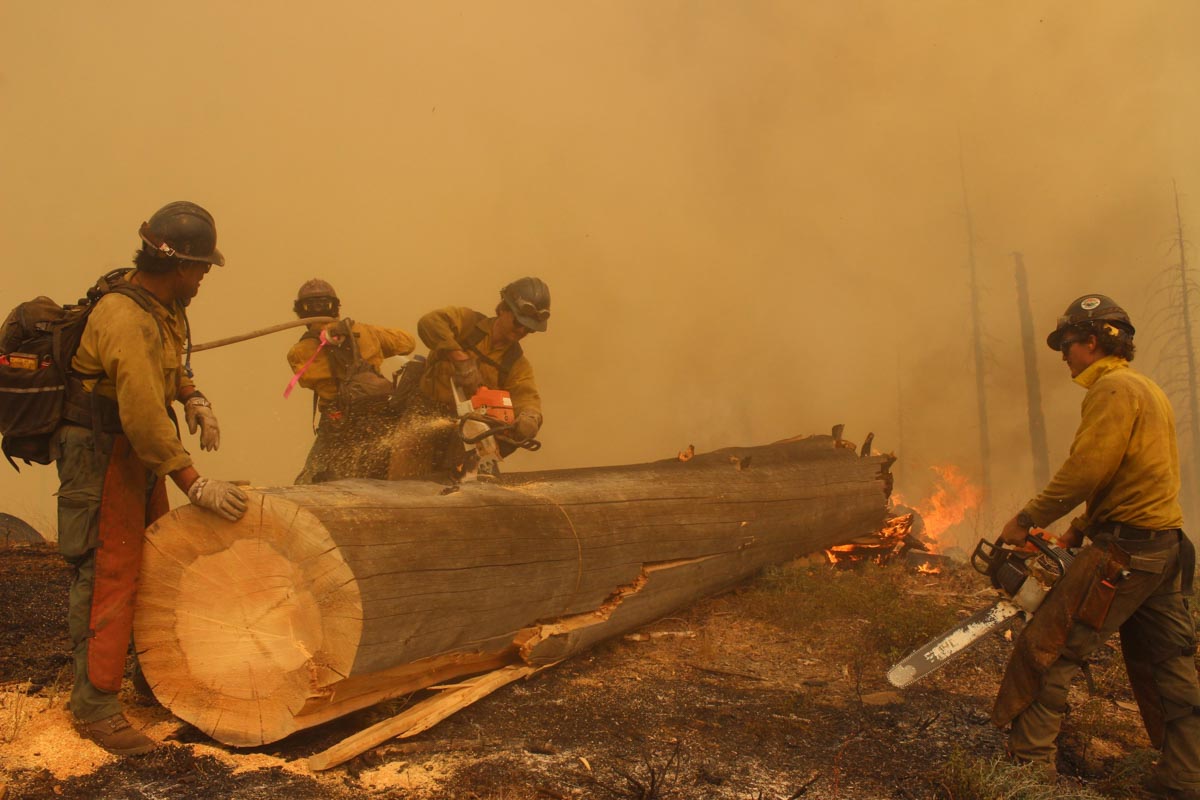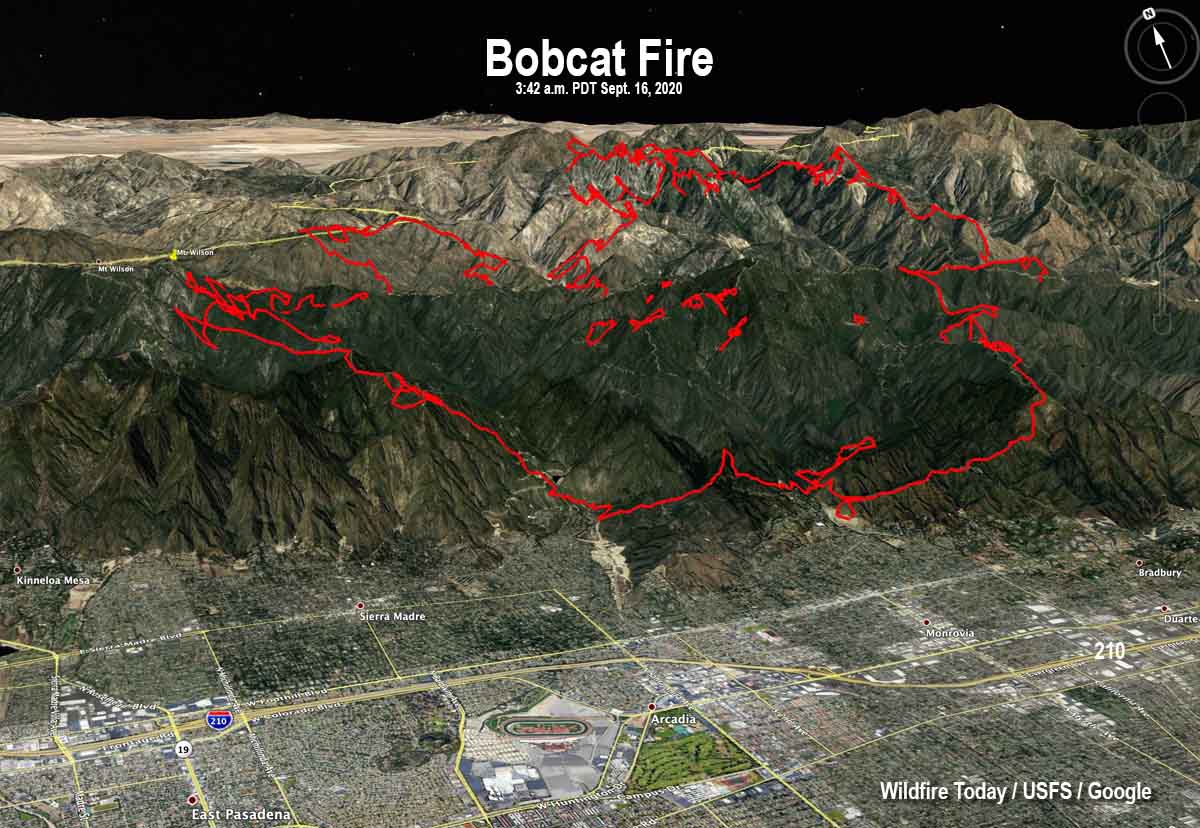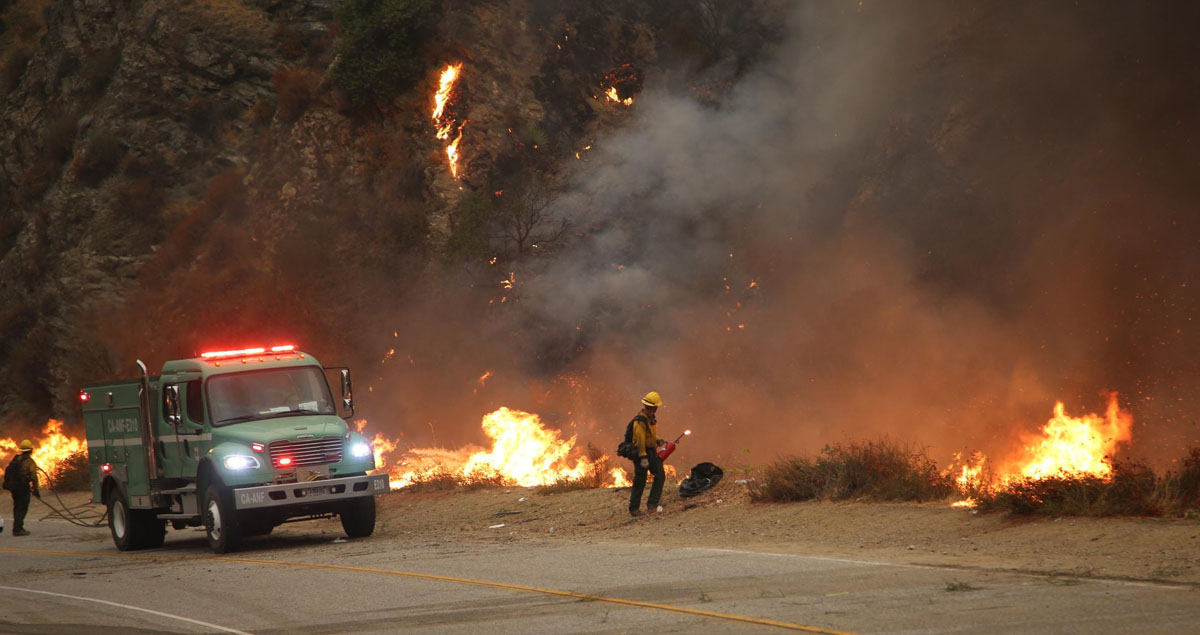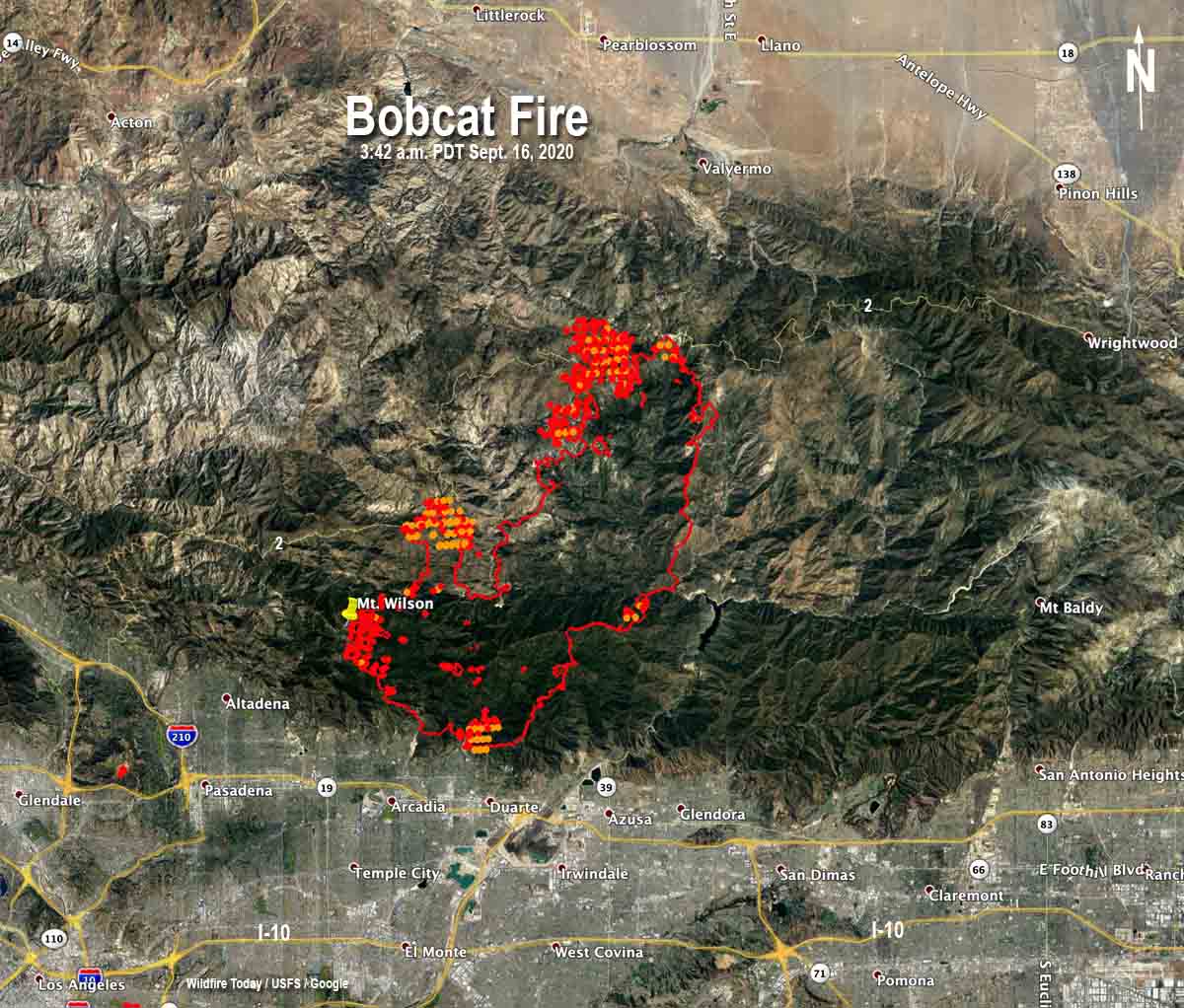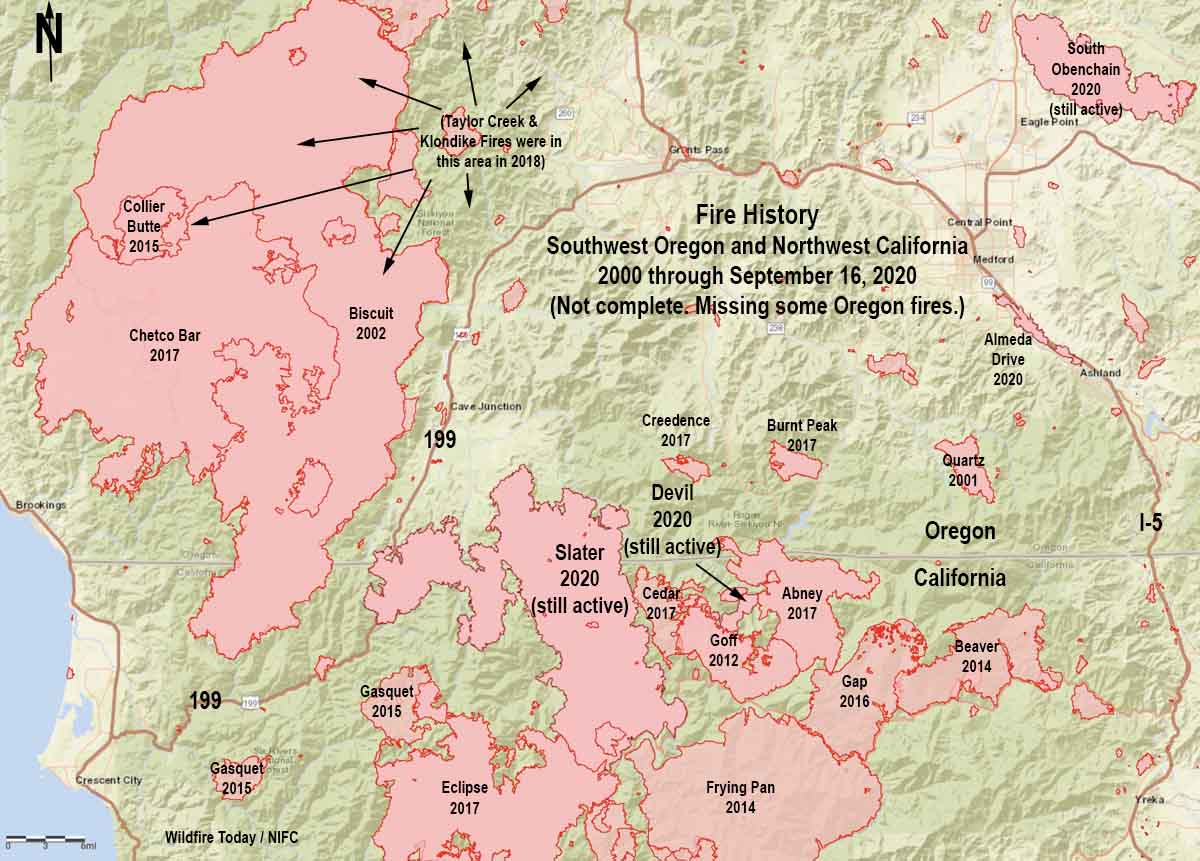
The Northwest California/Southwest Oregon area has kept firefighters very busy at times during the last 20 years, as you can see on the map above.
A new fire is rapidly putting itself into that history. The Slater Fire reported September 8 grew to 89,000 acres by September 9 and has now spread to 150,000 acres. That growth, however, has slowed in the last several days.
It started northeast of Happy Camp, California and ran north into Oregon then took a left and crossed Highway 199. It has come to within about four miles of the 2002 Biscuit Fire.
If recent fire history is any indication, the Slater Fire may not even slow down when and if it reaches the Biscuit burn, and of course it depends on the weather, which has moderated this week. The 2017 Chetco Bar Fire and the 2018 Klondike Fire burned for miles into the then 17 or 18-year old fire scar. The entire eastern two-thirds of the Chetco Bar Fire was in the footprint.
Strong winds that drove the dozens of fires September 8 in Oregon are not super rare. The Klondike Fire west of Grants Pass started July 15, 2018. In early October it had become virtually dormant, but a few hot spots were revitalized by an east wind event on the 14th. According to an article in the Mail Tribune the suddenly vigorous fire was transporting burning embers that started spot fires six miles out ahead of the flaming front:
“Extreme spotting” propelled fine embers up to six miles ahead of the main fire, dropping the live ash right between firefighters’ tents and close to people’s homes.
“We even had to move our own fire camp,” [information officer Kale] Casey said.
So if the weather this year is anything like it was two years ago, firefighters could be busy in the area for at least another month.
